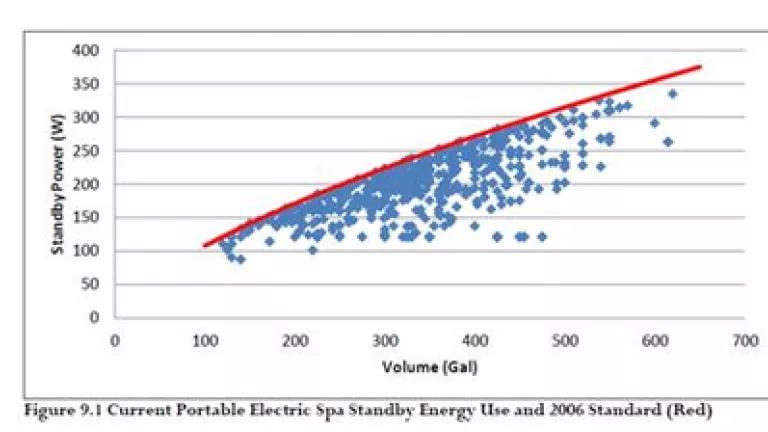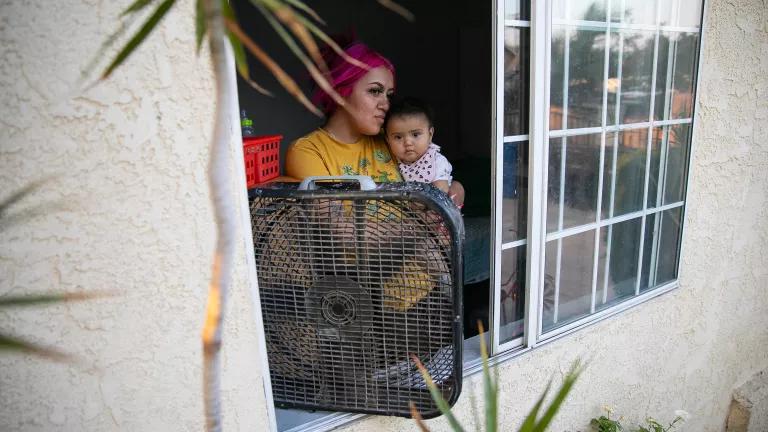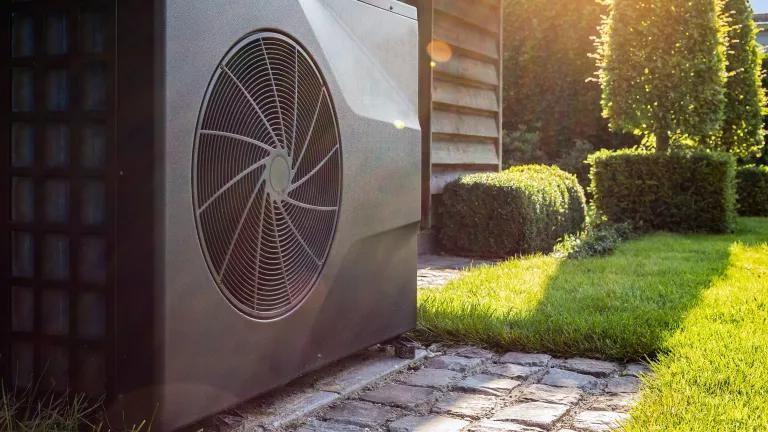California Is Setting the Standards: A Continuing Series on the California Energy Commission Process, Part I

Swimming in Savings: Pool Pump Standards and Hot Tub Labels Will Save Money and Power Whether you’re taking a dip on a hot summer’s day or relaxing and warming up on a cool summer’s night, how much energy pools and hot tubs use to keep clean and comfortable probably isn’t the first (or even last) thing on your mind. But their pumps, filtration systems, and heaters use as much electricity in California as is produced by two and a half 500 megawatt power plants.
Consider that there are almost 2 million residential pools and another 50,000 commercial pools in California. And approximately one out of every 10 Golden State residences has a spa or hot tub (over a million in total). Together these use a lot of energy – almost 7,000 gigawatt-hours (GWh) per year, in fact.
Fortunately, opportunities exist to reduce this energy use cost-effectively, saving consumers money while continuing to provide the same level of amenities. That’s why the California Energy Commission (CEC) is considering updating standards for pool pump motors and heaters and requiring hot tubs to be labeled with information on their energy use that once in full effect would save Californians $105 million dollars and reduce electricity by 805 GWh annually, equivalent to the emissions from over 71,000 passenger vehicles.
Why Standards Matter The proposed standards for new and replacement pool pumps, motors, and heaters and labels for hot tubs are just two of 15 product categories being considered by the CEC. If CEC sets standards at the recommended levels for all 15 products, Californian’s could save $1.2 billion annually on their energy bills and 50 billion gallons of water. That’s enough electricity and water to meet the energy and water needs of San Diego for a year!
These savings will benefit every Californian, not only through decreased energy and water bills, but also by reducing the need for dirty power generation. This reduces emissions that harm our health and increase global warming.
Proposed Standards for Pool Pumps, Motors, and Heaters
Pools use energy in both their heating systems and in pumping and filtration. The CEC originally adopted standards for pool pump motors in 2004. The original standards for pool pumps were simple prescriptive requirements that limited motor types and required the pump to be capable of operating at two speeds, since there was limited data on performance when the standards were set. Now that there is better data, the proposed standards would replace this prescriptive requirement with performance regulations that would be expanded to apply to all single-phase dedicated pool pump motors under 5 horsepower and would require them to meet certain efficiencies at full and part load.
The efficiency levels proposed are readily available on the market today and would reduce energy use by 630 GWh and demand by 120 MW after 10 years – approximately a 10 percent savings from current pool pump energy use. On a per pump basis, the proposed standards would result in net savings of $500 over the life of the pump. Once fully implemented, the standards would save Californian’s $82 million annually. The standards would also reduce emissions by the equivalent of 270,000 metric tons (MT) of carbon pollution annually once in full effect.
CEC is also considering revised standards for pool heaters. Pool heaters use energy both directly to heat the pool water and indirectly by adding friction to the system (known as total dynamic head). A pool heater is generally plumbed in the same loop as the pool pump and filtration system so that the water flows through the heater whenever the pump is running, regardless of whether the heater is in use or not. This means the pool pump essentially has to work harder to push pool water through the heater, resulting in additional energy use. It is this indirect energy use that is currently being considered by CEC. The proposed regulation would limit the amount of friction (total dynamic head) that can be added by the heater when it is off. A simple way to meet this standard would be through a valve which would allow pool water to bypass the heater when it isn’t running.
The proposed pool heater standard would save $240 per unit and a total $22 million annually after the entire stock turns over. The proposed standard level would also reduce electricity use by 170 GWh annually and peak demand by 32 MW once in full effect. This would reduce carbon pollution emissions by an additional 74,000 MT per year.
Proposed Labels for Hot Tubs
In 2004, the CEC set standards for the allowable standby power use for portable electric spas (more commonly known as hot tubs or spas). These standards limit the amount of electricity a spa can use when it is plugged in and on, but not in use, and are based on the volume of the spa. Even with these existing standards, hot tubs continue to use a lot of energy compared to other household appliances. For example, a 300 gallon spa could use up to 1,963 kilowatt-hours (kWh) in standby energy per year under the current requirements and cost a consumer about $300 per year on their energy bills (at 15 cents per kWh). By comparison, the average refrigerator uses approximately 400-600 kWh per year.
Currently there is no uniform way for a consumer to tell which spa is more efficient when they buy a new one, despite the fact that there is a wide range of available efficiencies. Each point on the graph below corresponds to a spa that meets the current California standards: for any give volume of spa, you can see that there is a wide range of available standby power. In some cases, there is a difference of over 50 percent! Approximately half of the spas certified in the database are more than 12.5 percent better than standard and approximately a quarter of the spas in the database are more than 25 percent better than the standard. The proposal to label spas would give consumers this information at the time of purchase, so they can make an informed decision.
Current California Electric Spa Standards and Certified Models. Source: California IOUs Standards Proposal for Pools and Spas, July 29, 2013.
If this label caused just 5 percent of consumers to buy a spa that was 12.5 percent more efficient than they would have without a label, it would result in 5.1 gigawatt-hours (GWh) per year in energy savings and 1 megawatt (MW) peak demand reduction once the full stock had turned over. This would save consumers $1 million annually and reduce carbon dioxide emissions by 2,200 MT.
(Photos used under Creative Commons licensing)



